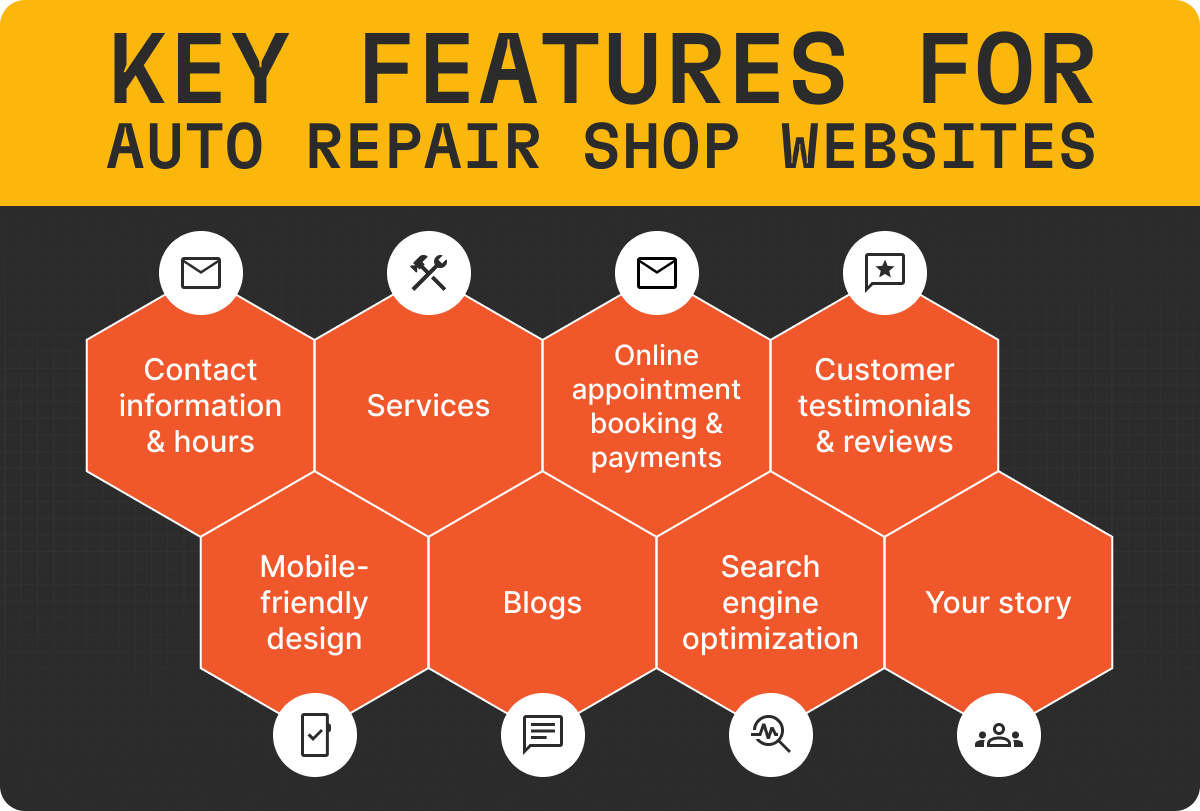For every auto repair business, creating a clear and professional receipt isn’t just good practice—it’s essential. Whether you're working on a major vehicle repair or a routine oil change, a detailed receipt serves as a proof of payment for the customer and a legal record for your shop. It helps you maintain transparency, build trust, and protect both parties in case of disputes or warranty claims.
If you’re building your own auto repair invoice template or refining your existing process, this guide walks you through every element your auto repair receipt template should include. From contact information to labor costs, here’s what a comprehensive auto repair receipt looks like.
Auto repair shop receipt example template
We designed an auto repair shop receipt template for you to download and use in your shop. The template can be used for auto body repair shops, mobile mechanics, general repair shops, and tire shops.
Download the free template below and modify it as needed to utilize in your shop.
AUTO SHOP RECEIPT TEMPLATE DOWNLOAD
What Should Be Included in an auto repair shop receipt?
1. Shop contact information
The first thing on your receipt should be your auto repair shop’s full contact information. This builds credibility and ensures customers know how to reach you if follow-up is needed.
What to include:
- Shop name
- Address
- Phone number
- Email address
- Website (if applicable)
- Business logo for branding
A well-organized template with your logo and contact information at the top makes your documents look professional and trustworthy.
2. Customer Information
Next, capture the customer’s name and their contact information. This ensures the receipt is tied to the correct individual and helps with record-keeping for recurring car repair clients.
What to include:
- Customer's name
- Address
- Phone number or email
This section ensures your auto repair business can easily identify who the repair services were for and reach them quickly if needed.
3. Date of service and invoice number
Every mechanic receipt needs to include the date of service and a unique invoice number. This creates an accurate timeline and helps organize documents chronologically for tax reporting, audits, or warranty purposes.
What to include:
- Date the service was completed
- Unique invoice number
- Optional: technician’s name or initials
4. Vehicle information
For any automotive service, tying the repair order to a specific vehicle is a must. This helps with real-time service tracking, vehicle history reporting, and future maintenance recommendations.
What to include:
- Year, make, and model
- Vehicle Identification Number (VIN)
- License plate number
- Mileage at the time of service
5. Description of services performed
This is the heart of the receipt. Clearly outline what repair work was done and what repair services were provided. The more detail, the better.
What to include:
- Itemized list of services
- Description of each job (e.g., “Brake pad replacement” or “Engine diagnostic”)
- Associated labor costs for each service
- Cost of parts
6. Parts and material breakdown
An itemized list of parts and materials used in the repair work is just as important as the labor section. This transparency helps avoid disputes and gives your customer clarity on what they’re paying for. Most auto repair shops don’t show the markup percentages on parts but you can if you want to maximize transparency.
What to include:
- Part name and number
- Quantity used
- Cost per unit
7. Balance Due and Payment Summary
Now it’s time to outline the financials, from the subtotal to the total amount. This section should also include the total cost, taxes, discounts, and any payment options you accept.
What to include:
- Subtotal (before tax)
- Taxes (state/local)
- Any discounts or promo codes
- Total amount due
- Payment methods accepted (e.g., cash, credit card, financing)
- Amount paid and remaining balance
- Due date for final payment, if applicable
Including this section with clear headings avoids confusion and can prevent billing issues down the line. It also ensures the receipt can function as proof of payment. Lastly, this is a great place to feature your financing options (if applicable).
8. Warranty Information
Warranty details protect both your shop and your customer in case a part fails or a job needs to be redone. If your auto repair shop offers any warranty, you need to clearly list what’s covered and for how long.
What to include:
- Warranty length (e.g., 12 months or 12,000 miles)
- What is and isn’t covered
- Instructions for claiming the warranty
- Any third-party coverage (for example, if a part manufacturer offers a separate warranty)
This section should be written in clear, non-technical language to help customers fully understand their protections. You may want to include a signature line for the customer to acknowledge receipt of the warranty.
9. Streamline receipts
Creating receipts and invoices by hand can be tedious but Tekmetric streamlines that for you. Tekmetric can help you build faster estimates and take payments digitally with our auto repair estimate software.
Some of our features include:
- Streamlined estimate building
- Digital approvals
- Job history and reporting in one place
- Financing options for customers
Final Thoughts
A well-documented auto repair receipt protects your shop, helps your customer feel confident, and sets the tone for a long-term relationship. From capturing accurate customer information to detailing every repair service, your mechanic receipt should leave nothing to guesswork.
Don’t just think of it as paperwork—think of it as part of your shop’s customer experience. With a little extra attention to your receipt process, your auto repair shop can stand out as a professional, transparent, and customer-first automotive service provider.



.png)
.png)





.svg)



.svg)